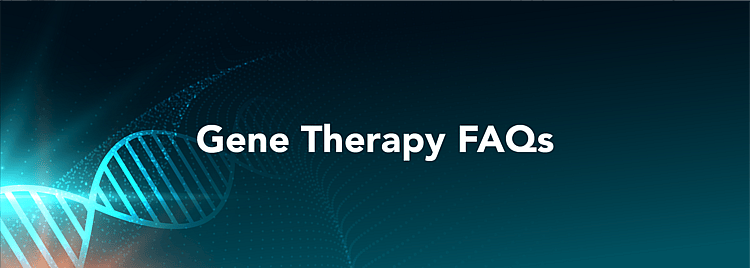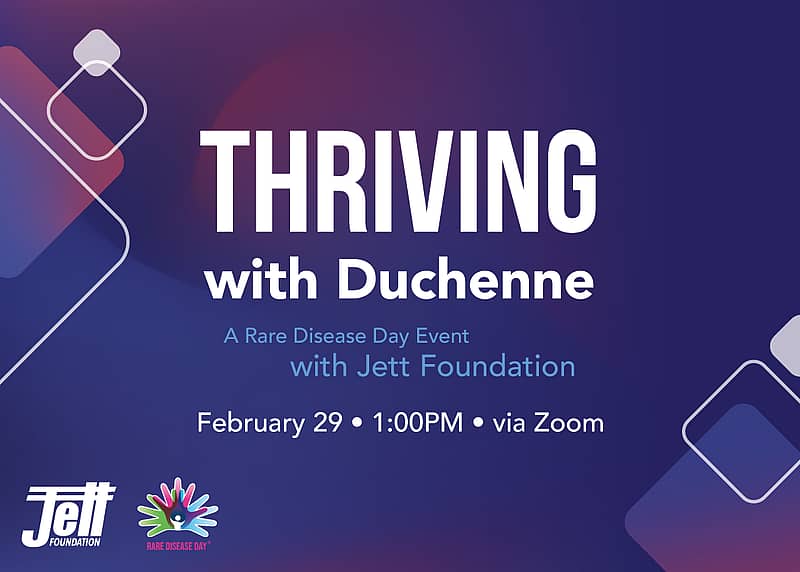
Q. What is gene therapy?
A. Gene therapy is the concept of using genes as a drug. Rather than a small molecule or a typical drug, with gene therapy an actual gene is delivered to the body. The most common application is for genetic diseases, such as muscular dystrophy, where the cause of the disease is a defective, or mutant, gene. Here, a normal copy of the gene is delivered to replace the defective copy. In other applications, an overactive mutant gene can cause toxicity, and in those cases the goal of gene therapy is to shut-off the mutant gene.
Q. How is it similar and different from stem cell therapy or CRISPR?
A. Stem cell therapy refers to the use of delivered, or transplanted, stem cells to provide a fresh source of cells to re-build or regenerate a diseased tissue. Usually the stem cells are provided by a donor, who is typically a close relative of the patient. However, gene therapy and stem cell therapies can be combined by using the patient’s own stem cells, but first ‘fixing’ those cells using gene therapy. In this case gene therapy is used to replace or shut-down the defective gene in the stem cells before the transplant. The most common uses of stem cell therapies are with bone marrow transplants for cancers such as leukemia. However, there is considerable interest in applying stem cells to the muscular dystrophies. To date, such approaches have not been very successful due to an inability to deliver muscle stems cells all over the body.
Q. CRISPR, or more commonly ‘gene editing’ is a type of gene therapy where the defective gene can be repaired, or at least modified, in such a way as to permit it to partially function.
A. In the latter case, gene editing can be used to induce exon skipping, as is done with anti-sense oligonucleotides for DMD and SMA. However, gene editing would permanently alter a gene such that it continuously undergoes exon skipping. Gene editing therefore only needs to be applied once, although it eventually might need to be repeated since muscle cells are slowly replaced over time and the edited cells will slowly be lost and potentially replaced by non-edited cells. The most common use of gene editing to date is also with stem cells, and at least 2 gene therapies have now been approved by the FDA where a blood stem cell is modified by gene therapy or CRISPR to enable the blood cells to efficiently fight off blood cancers such as leukemia. This is referred to as ‘CAR T-cell therapy’.
Q. What is an AAV and what does it do?
A. AAV is a “vector” meaning it can carry and deliver genes to various cells or tissues. A vector is like a shuttle bus, as it can carry things (in this case a gene) from one place to another. The AAV vectors that are being used in gene therapies are made from a virus known as ‘adeno-associated virus’ (or AAV). This is not to be confused with the similarly named virus ‘adenovirus’, which is a different virus and which has also been made into a gene therapy ‘vector’. The idea behind these virus-derived vectors is that they are efficient ways to get a new gene into the body and into the cells/tissues that are the target of the gene therapy. AAV vectors are made from the AAV virus by removing all the viral genes and replacing them with the therapeutic gene. Thus, the vectors no longer carry any viral genes that can make you sick, instead they only carry a therapeutic gene, such as micro-dystrophin. AAV vectors are very small and can only carry very small genes, thus they are not able to carry the full dystrophin gene, which is the largest known gene. Hence, the development of miniaturized “micro-dystrophin” genes.
Q. AAV, and how common it is to already have been exposed?
A. Since AAV is a naturally occurring virus that can infect humans, many people have already been exposed to AAV. In fact, there are more than 100 natural types (or serotypes) or AAV, and any given person has a reasonable change of having been exposed to one or more types of AAV in their lifetime. As a result, many people have been exposed to one or more types of AAV already, although the chances of having being exposed increase with age. Importantly, as several types of AAV are being used in the clinic, one is ineligible for a clinical AAV trial only if they have previous exposure to the type of AAV being used in that trial. Thus, if you have been exposed to AAV9, and are therefore immune to AAV9, you might still be eligible for a trial using AAV8. In general, about 30% of patients have been found to be ineligible for a given gene therapy trial because they are already immune to a particular type of AAV. Current research being conducted in a number of labs is focused on overcoming this pre-existing immunity issue, and it is hoped that this will not remain a barrier to gene therapy in the future.
Q. Are there clinical trials going on for gene therapy in Duchenne?
A. Yes, three groups are performing clinical trials for DMD gene therapy. All three are testing AAV-microdystrophin, an approach originally developed in my lab. Sarepta and Pfizer are testing an older generation of micro-dystrophin, while Solid Biosciences is testing a newer version. All three trials are in early phases, but preliminary results are encouraging.
Q. Do we know if gene therapy is safe and effective for the treatment of Duchenne?
A. We do not yet know, and this is the main goal of the early gene therapy trials. So far, a few fairly minor problems have been seen in some patients. However, in every case the side effects lasted at most 1-2 weeks and then went away. Thus the early safety data are encouraging, but it is still early. Effectiveness is not yet known. The treated patients have shown significant drops in serum CK levels and some improvement in other outcome measures, but we need to wait and see if these continue to improve and for how long they will last. More importantly, we need to see if overall strength increases and in which muscles.
Q. Will gene therapy be an option for all patients with Duchenne?
A. Eventually, gene therapy should be an option for any patient with DMD or BMD. However, a current limitation is that some patients are already immune to certain types of AAV, hence they are being excluded from the current clinical trials. With advances in our knowledge of ways to overcome this immunity it is hoped that all patients will become eligible for AAV gene therapies.
Q. Are all mutations in Duchenne able to participate in gene therapy?
A. As far as we now know, any mutation is eligible for AAV-microdystrophin therapy. The same is not true for CRISPR/gene editing. With CRISPR, a specific vector needs to be made for each exon of the gene, so as is also the case with exon skipping, only certain mutations will be treatable with any given vector. Some mutations also do not appear to be treatable via CRISPR.
Q. Is it true that if someone participates in a gene therapy trial that they may not be able to participate in another study?
A. No, but one can only be enrolled in one experimental therapy trial at any given time. However, if one enrolls in an AAV gene therapy trial it could limit their ability to enroll in a different AAV trial, because a dose of AAV vaccinates you against the AAV vector. Still, there are many types of AAV, and several labs are developing ways to get around this vaccination problem, so we hope that this will change in the future, allowing one to receive multiple doses of AAV.
Q. Why can’t kids be screened for antibody while on another investigational drug?
A. I see no reason why anyone could not be screened for antibodies. It may simply be a matter of cost, as one does not really need to do this screen unless they are about to be enrolled in an AAV gene therapy trial.
Q. Will the boys treated with micro dystrophin ever be able to stop taking steroids, or are the steroids necessary to avoid immune response to the micro dystrophin in the muscles?
A. This is currently unknown, we will need to see how well patients respond to the gene therapy. Currently, plans are to continue steroids, but perhaps at lower doses. However, if gene therapy works as well as hoped it may be possible to stop using steroids.
Q. Is it true that gene therapy will cure all patients with Duchenne?
A. It is way too early to know, we are still in the middle of early phase gene therapy clinical trials. Also, I hesitate to use the word “cure”, as gene therapy has the potential to be a highly effective treatment, but it is not a complete cure. Micro-dystrophins are not 100% functional, and any gene therapy may not last more that 10-20 years. Also, an actual cure would need to be applied before any symptoms develop. People talking about a cure are exaggerating the potential, and should be listened to with a bit of caution.
Q. Is it true that gene therapy will only be one dose? Will there be any opportunity for a second dose? Do we know how long one dose will last?
A. Currently, only one dose of an AAV vector is planned since it is not known how to give a second dose. This is because the first does activates the body’s immune system, essential vaccinating the patient against AAV. Still, promising leads are emerging on how to overcome this immunity and in the future it should be possible to repeat the dose. We do not yet know how long one dose will last, the best guess is 10-20 years.
Q. Do they expect the improvement in heart function to be similar to that of skeletal muscle? If not, is it not a path to bad outcomes?
A. We hope that heart function will also benefit form AAV-microdystrophin gene therapy. However, it is too early to know how much the heart will respond. Animal studies show this therapy works well in the heart, but not quite as well as in skeletal muscles. Several labs, including my own, are actively working to improve heart function after gene therapy. This is very important, because therapy of skeletal muscles without also treating the heart can actually worsens the heart pathology.
Q. Have gene therapies for diseases other than Duchenne been approved by the FDA?
A. Gene therapy has not yet been approved for DMD by the FDA. The FDA has partially approved Eteplirsen, which is exon skipping, but this is not a ‘true’ gene therapy in that it modifies a product of the DMD gene (it’s mRNA) but not the gene itself. The first gene therapies for DMD that may be granted approval are the AAV-microdystrophin gene therapies that are currently in clinical trials. Gene editing for DMD may also be approved in the future, but those clinical trials have not yet begun. Gene therapies for other diseases have already been approved by the FDA. The first was for a form of inherited blindness, and others have now been approved for several forms of blood cancer such as leukemia. Recently, the FDA approved gene therapy using AAV for the severe form of spinal muscular atrophy, or SMA. More approvals are expected soon.
Written by: Jeffrey S. Chamberlain, Ph.D.
McCaw Endowed Chair in Muscular Dystrophy Director,
Sen. Paul D. Wellstone Muscular Dystrophy Specialized Research Center
Professor of Neurology, Medicine and Biochemistry University of Washington School of Medicine, Seattle, WA






